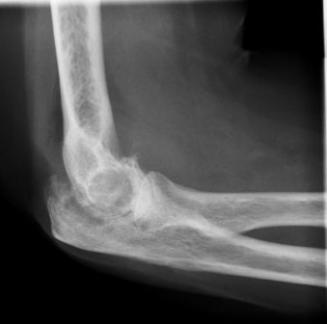WHAT IS IT?
Arthritis is the loss of the cartilage lining the joint surface (articular cartilage). Normally this is a soft glistening smooth white tissue which acts as a bearing surface to allow the joint to move freely. If the cartilage is damaged the surface becomes rough and no longer glides. This causes pain and stiffness within the joint.
The most commonly affected joints are the hip and the knee. The elbow is rarely affected.
WHAT CAUSES IT?
The primary cause of arthritis in the elbow is rheumatoid arthritis, condition that affects joints and organs throughout the body.
Other causes include
- Trauma: If the elbow joint has been broken (fractured) at some point the cartilage may have been damaged
- Instability: If the elbow has dislocated at any time the cartilage may have been damaged
- Idiopathic: Arthritis of unknown cause. It may be genetic (inherited) or may be due to heavy manual work but a specific cause is usually not found.
WHAT ARE THE SYMPTOMS?
Pain is usually the first complaint and may be difficult to locate precisely. The elbow may also stiffen, the first movement to be lost is extension (straightening). As the condition progresses flexion (bending) is reduced as is the ability to fully rotate the wrist. There may be a sensation of grinding or catching within the elbow. On occasion there may be crunching which can be heard.
HOW IS THE DIAGNOSIS MADE?
The doctor will listen to the description of the symptoms and will examine the elbow. Plain Xrays are usually sufficient to make the diagnosis.
